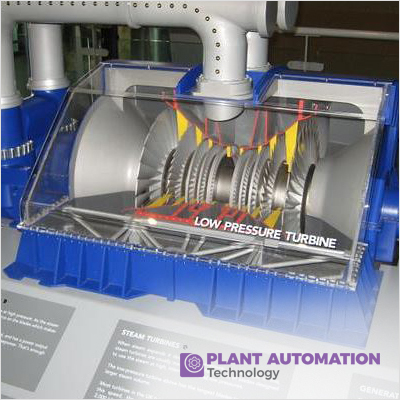How Do Steam, Gas, and Hydraulic Turbines Transform Industrial Automation?

In the realm of industrial automation, the integration of advanced technologies plays a pivotal role in enhancing efficiency, reducing costs, and optimizing processes. Among these technologies, steam, gas, and hydraulic turbines stand out as key players in transforming the landscape of industrial automation. From harnessing energy to powering critical systems, these turbines play a vital role in driving automation forward.
Hydraulic Energy in Industrial Automation
Hydraulic energy is a cornerstone of many industrial processes, offering high power density and precise control. Hydraulic turbines are instrumental in converting the potential energy of water into mechanical energy, which is then used to drive various components in automated systems. This form of energy is particularly advantageous in applications where high forces and accurate movements are required, such as in heavy machinery, manufacturing plants, and construction equipment.
The utilization of hydraulic energy in industrial automation has revolutionized how tasks are performed. For example, hydraulic actuators powered by hydraulic turbines enable precise control of robotic arms in assembly lines, ensuring consistent and accurate product assembly. In the realm of renewable energy, hydraulic turbines play a crucial role in hydroelectric power generation, where the kinetic energy of flowing water is converted into electricity through turbines connected to generators.
Gasoline Turbines: Powering Automation
Gasoline turbines, also known as gas turbines, are widely used in industrial settings to generate electricity and provide mechanical power. These turbines operate on the principle of converting the energy from burning fuel, typically natural gas or diesel, into mechanical energy through a series of compressor and turbine stages. Gas turbines are highly efficient and offer rapid startup times, making them ideal for applications requiring immediate power output.
In industrial automation, gasoline turbines play a significant role in powering critical systems such as generators, pumps, and compressors. They are commonly used in combined cycle power plants, where their exhaust heat is utilized to generate additional steam power, maximizing energy efficiency. Gas turbines also find applications in aircraft propulsion, marine propulsion systems, and large-scale industrial processes where continuous power supply is essential for operation.
Hydro Turbine Automation: Harnessing Water Power
Hydro turbines harness the kinetic energy of moving water to generate electricity, making them a sustainable and reliable source of power. In industrial automation, hydro turbine automation plays a vital role in hydropower plants, where water flow is controlled to optimize energy production. Automated systems monitor water levels, turbine speeds, and power output to ensure efficient operation and maximize energy generation.
The advantages of hydro turbine automation extend beyond power generation. These turbines can provide grid stability by adjusting power output based on demand fluctuations, contributing to a more resilient and responsive energy infrastructure. Additionally, hydro turbine automation enables remote monitoring and control, allowing operators to manage turbines from centralized control centers, enhancing operational efficiency and safety.
Transformative Role of Gas Turbines
Gas turbines have a transformative impact on industrial automation, offering high power output, fuel flexibility, and low emissions. Their compact design and fast response time make them suitable for a wide range of applications, from power generation to mechanical drive systems. Gas turbine technology continues to evolve, with advancements in combustion efficiency, materials, and digital control systems enhancing their performance and reliability.
In industrial automation, gas turbines are deployed in various sectors, including energy production, manufacturing, and transportation. They serve as prime movers for electricity generators, providing backup power during grid outages or supplementing renewable energy sources. Gas turbines also drive compressors and pumps in oil and gas facilities, where precise control and high reliability are paramount for uninterrupted operations.
Turbine Monitoring Technology: Enhancing Performance
Turbine monitoring technology plays a crucial role in optimizing turbine performance and ensuring operational reliability. These monitoring systems utilize sensors, data analytics, and predictive maintenance algorithms to track key parameters such as temperature, vibration, and fluid levels. By continuously monitoring turbine health, operators can detect potential issues early, schedule maintenance proactively, and prevent costly downtime.
The integration of turbine monitoring technology into automated control systems enables real-time data analysis and decision-making. Automated alerts and notifications provide operators with actionable insights, allowing them to respond swiftly to changing conditions and optimize turbine performance. Additionally, predictive maintenance based on data-driven analytics helps extend turbine lifespan, reduce maintenance costs, and enhance overall system reliability.
The Gas Hydraulic Cycle: Optimizing Energy Usage
The gas hydraulic cycle combines the principles of gas turbines and hydraulic systems to optimize energy usage and enhance system efficiency. In this cycle, gas turbines drive hydraulic pumps to pressurize hydraulic fluid, which is then used to power hydraulic actuators or motors. This hybrid approach offers advantages such as energy recovery, load balancing, and precise control over mechanical movements.
In industrial automation, the gas hydraulic cycle finds applications in heavy machinery, material handling systems, and motion control systems. By utilizing the energy from gas turbines to power hydraulic systems, companies can achieve energy savings, reduce environmental impact, and improve overall system performance. The integration of smart control algorithms further enhances the efficiency of the gas hydraulic cycle, allowing for dynamic adjustments based on operational requirements.
Steam Turbine Automation: Precision and Efficiency
Steam turbines have long been a cornerstone of power generation and industrial processes, harnessing the energy of steam to drive turbines and generate mechanical power. In industrial automation, steam turbine automation plays a critical role in providing reliable and efficient power supply for various applications. Steam turbines are used in steam power plants, cogeneration systems, and industrial facilities requiring high-capacity energy generation.
The automation of steam turbines involves advanced control systems that monitor steam flow, pressure, and temperature to optimize turbine performance. Automated valve controls, turbine speed adjustments, and load balancing mechanisms ensure precise control over power output and system stability. Leading steam turbine manufacturers continuously innovate their products, incorporating digital control interfaces, predictive maintenance features, and remote monitoring capabilities for enhanced automation.
Conclusion:
Steam, gas, and hydraulic turbines are integral components of industrial automation, driving efficiency, reliability, and sustainability across diverse sectors. From harnessing renewable energy sources to powering critical systems, these turbines play a transformative role in shaping the future of automation. With ongoing advancements in turbine technology, monitoring systems, and control algorithms, the potential for further innovation and optimization in industrial automation is vast. By leveraging the capabilities of steam, gas, and hydraulic turbines, industries can achieve greater operational efficiency, reduce environmental impact, and drive sustainable growth in the era of automation.





